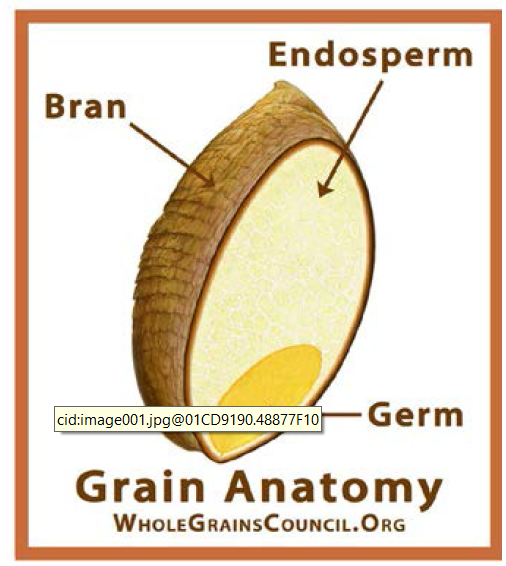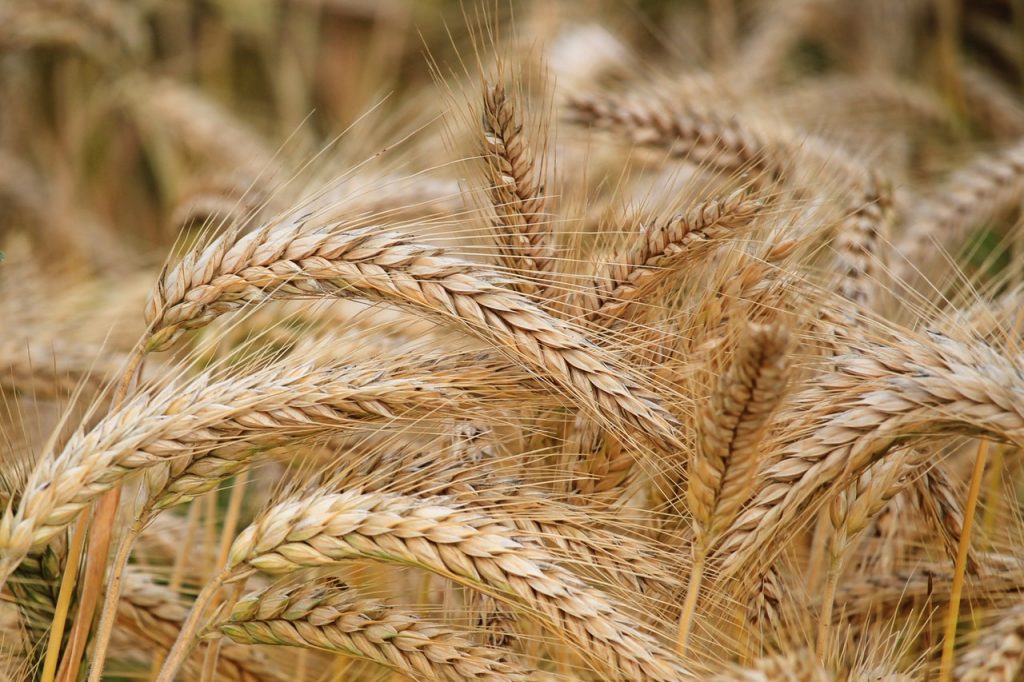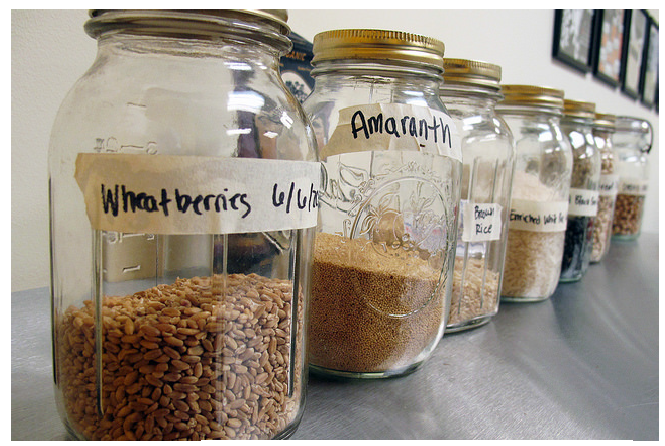
Whole grains include any foods that contain all three naturally present parts of a grain as shown in the diagram to the right – the bran, germ, and endosperm. The bran and germ contain important antioxidants, fiber, and several vitamins and minerals. The endosperm provides nutrition in the form of starch, oils, and protein. Processed grain foods have all or part of the bran and germ removed, leaving only the starchy endosperm.
Why Eat More Whole Grains?
Whole grains offer a wide variety of health benefits, including:

- They can reduce the risk of chronic diseases like heart disease, stroke, certain cancers, and diabetes.
- Whole grains can help you feel full longer and lower cholesterol.
- The fiber in whole grains helps prevent constipation and diverticular disease (diverticulosis) by decreasing pressure in the intestines.
Examples of Whole Grains
Whole grains that you can find in most grocery stores include:
How to Identify Whole Grain Products
- Amaranth
- Barley
- Brown and wild rice
- Buckwheat
- Corn (including popcorn and whole grain cornmeal)
- Millet
- Oats
- Whole wheat (including bread products, pastas, and cereals)

- Read the ingredient list. The first grain listed should be a whole grain such as whole wheat flour, whole oats, or brown rice.
- Look for the whole grain stamp. The 100% stamp means all grain ingredients in the product are whole grains, and there are at least 16 grams of whole grains per serving. The daily recommendation for most adults is 6-8 ounces of whole grain each day. Look at https://wholegrainscouncil.org/whole-grain-stamp for more details about the whole grain stamp.
10 Easy Ways to Enjoy More Whole Grains
There are lots of delicious ways to eat whole grains. Try some of the following:
- Serve whole wheat pasta, or combine 50/50 regular and whole wheat.
- Make a big batch of brown rice, and freeze some for later. Or, try quick brown rice, which is parboiled and cooks in about 10 minutes.
- Extend your meatloaf or meatballs with rolled oats, or add a handful of rolled oats to your yogurt or cold cereal.
- Use whole-grain cornmeal in your homemade cornbread or corn muffins.
- Have oatmeal for breakfast. If you like flavored oatmeal, mix one packet with ½ cup quick oats for more whole-grain goodness and less sugar.
- Buy tortilla chips made from whole corn meal, or pop up some popcorn.
- Substitute a portion of the all-purpose flour in your breads and cookies with whole wheat flour or oat flour.
- Try whole wheat pastry flour in cookies, pastries, and quick breads for the benefits of whole grain with a finer texture.
- Use whole wheat couscous for a speedy whole-grain side dish.
- Explore using quinoa or bulgur to make grain-based salads like tabbouleh.
- For more ideas, click here.
For more information on the grains group and daily recommendations of whole grains, check out: https://www.choosemyplate.gov/grains


